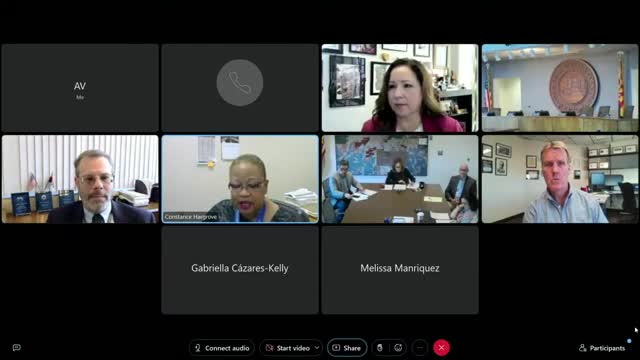Ballot processing confusion sparks election integrity concerns
November 21, 2024 | Pima County, Arizona
This article was created by AI summarizing key points discussed. AI makes mistakes, so for full details and context, please refer to the video of the full meeting. Please report any errors so we can fix them. Report an error »

In a recent government meeting, officials discussed the complexities surrounding ballot processing and the discrepancies between ballots cast and ballots processed during the recent election. A key point emphasized was the distinction between the number of ballots cast and the number of cards processed, clarifying that these terms should not be used interchangeably.
The meeting highlighted the importance of the early ballot process report, which details the number of early ballots sent, returned, and processed. According to the recorder's report, 3,555 out of 6,849 provisional ballots were accepted, with the remaining ballots either unverified or rejected due to various issues, including registration problems.
Officials addressed concerns regarding fluctuating numbers on the Secretary of State's website, explaining that not all provisional and early ballots were counted due to the need for curing some ballots. This complexity makes it challenging to reconcile the total number of ballots processed with those cast.
The total ballots cast in the election amounted to 518,466, which included 442,281 early ballots and 72,630 from vote centers. Notably, the voting equipment only counted the first page of multi-page ballots, leading to a slight discrepancy in the total ballots cast versus processed. Despite this, officials assured that all votes on the second page were counted.
The meeting concluded with officials affirming the accuracy of the election results based on the data received from vote centers and the recorder's office, underscoring the meticulous nature of the ballot processing system.
The meeting highlighted the importance of the early ballot process report, which details the number of early ballots sent, returned, and processed. According to the recorder's report, 3,555 out of 6,849 provisional ballots were accepted, with the remaining ballots either unverified or rejected due to various issues, including registration problems.
Officials addressed concerns regarding fluctuating numbers on the Secretary of State's website, explaining that not all provisional and early ballots were counted due to the need for curing some ballots. This complexity makes it challenging to reconcile the total number of ballots processed with those cast.
The total ballots cast in the election amounted to 518,466, which included 442,281 early ballots and 72,630 from vote centers. Notably, the voting equipment only counted the first page of multi-page ballots, leading to a slight discrepancy in the total ballots cast versus processed. Despite this, officials assured that all votes on the second page were counted.
The meeting concluded with officials affirming the accuracy of the election results based on the data received from vote centers and the recorder's office, underscoring the meticulous nature of the ballot processing system.
View full meeting
This article is based on a recent meeting—watch the full video and explore the complete transcript for deeper insights into the discussion.
View full meeting
